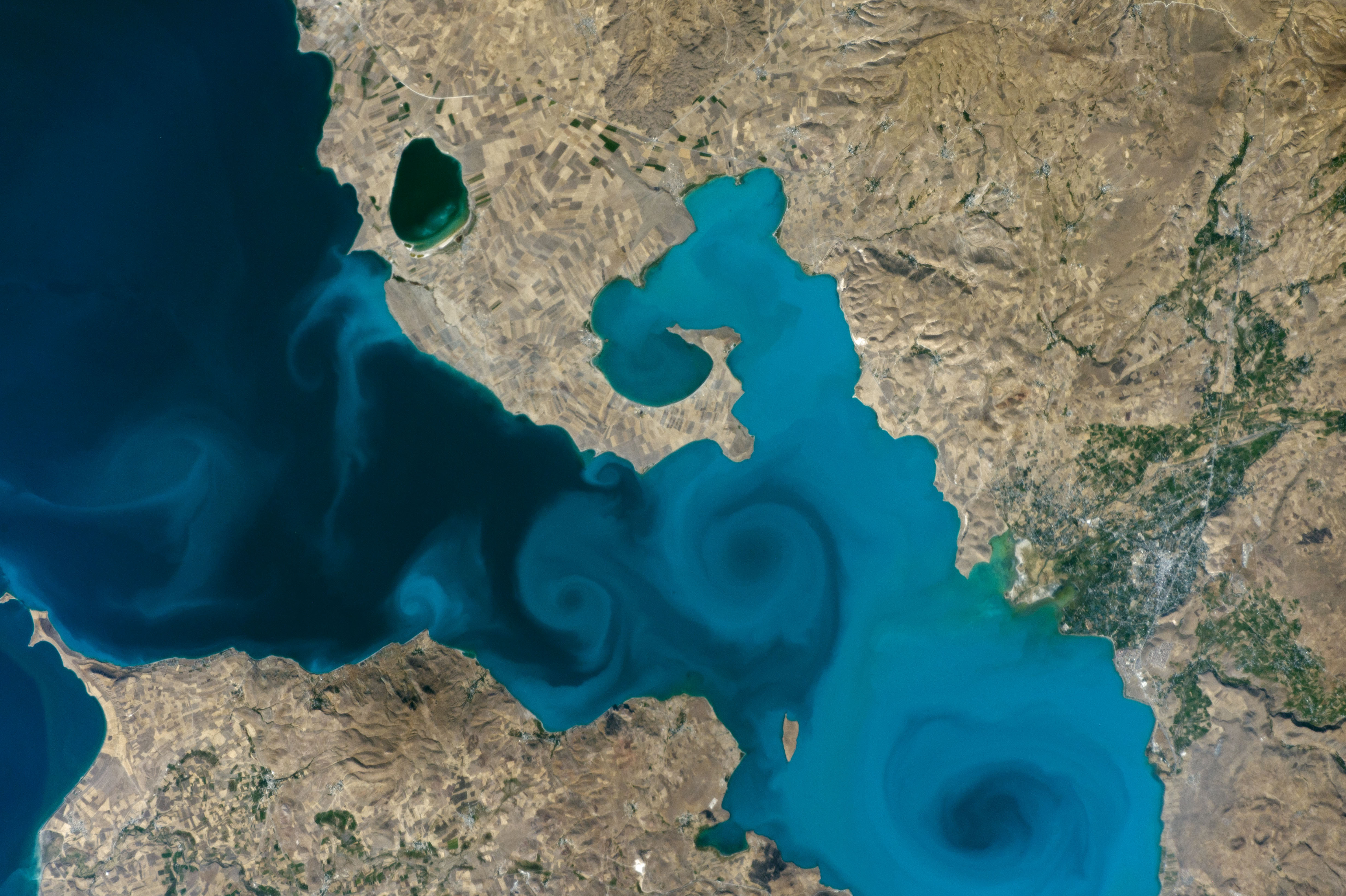[:ja]国際宇宙ステーションISSから撮影したトルコ最大のヴァン湖です。

ヴァン湖は地球で最大のアルカリ湖です。ヴァン湖には周囲の山々から流入する小川が多数ありますが、古代の火山噴火により流出河川が遮断され、水の出口がないため、水が蒸発し、10以上のアルカリ度を示す湖となりました。湖水は炭酸カルシウムを豊富に含んでいますが、春と秋には降水などにより湖への水の流入量が増加し、プランクトンや藻類などが繁茂します。また、ヴァン湖沿岸には、ウラルトゥ王国(紀元前9世紀-紀元前6世紀)の首都トゥシュパがありました。
地上の様子はこちらです。

参考文献: Lake Van, Turkey (NASA Earth Observatory)
ウェブ地球儀で地球俯瞰画像を見る: LiVEARTH
[Earthview Wonders] No.579: Lake Van, Turkey🇹🇷
International Space Station ISS captured Lake Van, the largest lake in Turkey and the largest soda or alkaline lake on Earth.

Generally, soda lakes are distinguished by high concentrations of carbonate species. Lake Van is an endorheic lake with a pH of 10 and high salinity levels. The lake is abundant in turbidity plumes which are mostly comprised of calcium carbonate, detrital materials, and some organic matter. High particle fluxes occur in Lake Van during spring and fall, when phytoplankton and aquatic plants grow and produce a lot of organic carbon.
The local scenery on the ground is as follows.

Reference: Lake Van, Turkey (NASA Earth Observatory)
See earthview photo gallery with web-globe: LiVEARTH[:en][Earthview Wonders] No.579: Lake Van, Turkey🇹🇷
International Space Station ISS captured Lake Van, the largest lake in Turkey and the largest soda or alkaline lake on Earth.

Generally, soda lakes are distinguished by high concentrations of carbonate species. Lake Van is an endorheic lake with a pH of 10 and high salinity levels. The lake is abundant in turbidity plumes which are mostly comprised of calcium carbonate, detrital materials, and some organic matter. High particle fluxes occur in Lake Van during spring and fall, when phytoplankton and aquatic plants grow and produce a lot of organic carbon.
The local scenery on the ground is as follows.

Reference: Lake Van, Turkey (NASA Earth Observatory)
See earthview photo gallery with web-globe: LiVEARTH[:]